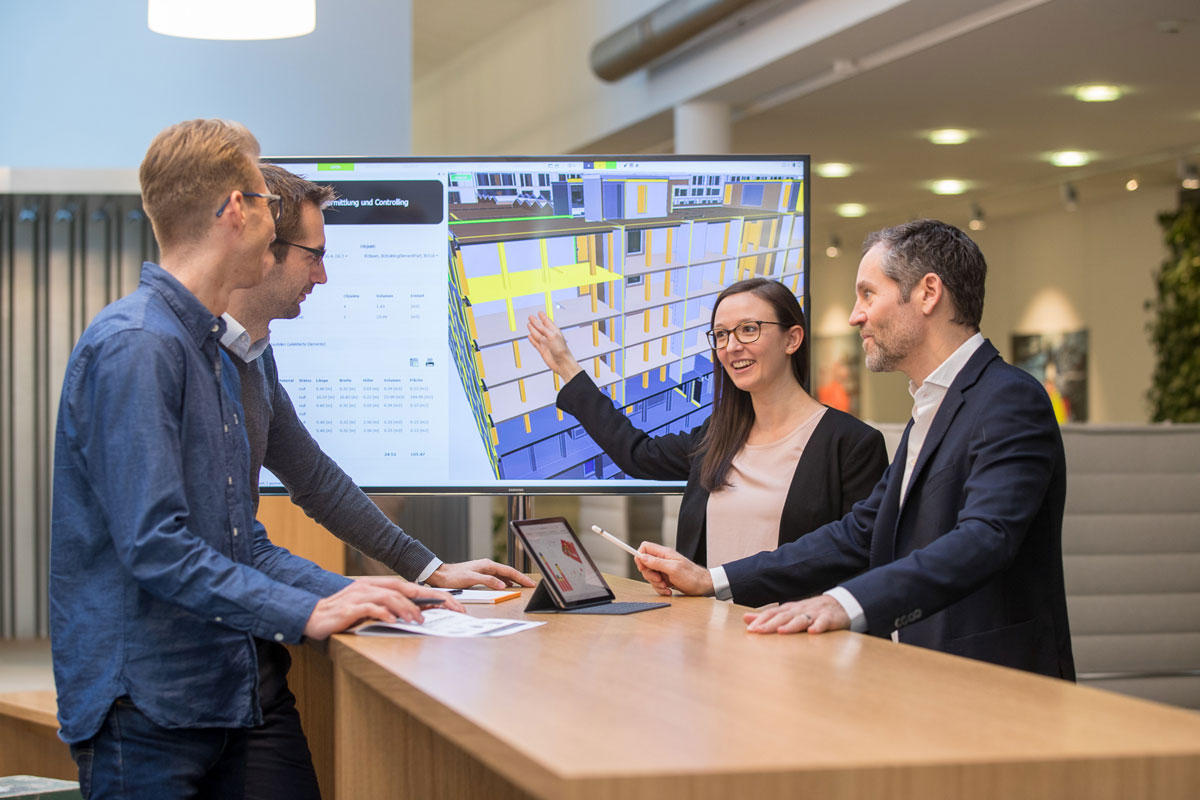
Wood shows the way to the digital future
Wood is the oldest and probably also the most modern building material. And not only in terms of sustainability. With no other material has digitalisation already penetrated so far into everyday construction. By prefabricating elements in production halls, modern timber construction can already take advantage of many automation options of industrial production that would still require a great deal of additional effort on construction sites.
Ideal for automated production
For Anna Gawlikowska (pictured), who as Head of Digitalization Strategy is organising Implenia's path into the data-driven future, a fundamental advantage of wood comes into play in prefabrication: the natural product can be easily adapted to the various requirements of walls, ceilings or load-bearing elements, for example. Different wooden buildings can be flexibly assembled from standard elements, similar to Lego constructions. This means that wood has the ideal prerequisites for machine production.
3D BIM data bring high benefit
Implenia's element production, which is already digitalised to a considerable extent, gives timber construction an additional digitalisation edge. This also gives the natural material an advantage over other materials when it comes to BIM (Building Information Modelling). For example, the 3D models that the production robots need to manufacture the elements can be obtained directly from BIM.
In addition, the high degree of prefabrication requires precise and detailed process planning. Subsequent changes at the construction site mean a relatively large additional time and financial outlay. This means that timber construction benefits more than average from the construction process simulations made possible by BIM, which can be used to optimise construction site logistics, among other things.
Crossing the BIM boundaries in the future too
If, in the context of the Krokodil house to be built in timber construction in the new Lokstadt district of Winterthur (see article on the right), BIM is already being used for the first time in the architectural competition and thus across all planning phases, for Gawlikowska this marks only the beginning of a development that will go much further.
"In the future, all digital tools will be integrated into an information process. In addition to BIM, this will include, for example, human resource planning, supply chain management, 'smart contracts', communication systems and the production of components," emphasises the data modelling specialist, who has already led several complex large-scale digitalisation projects at ETH Zurich in the fields of urbanity, mobility, investment and energy modelling, among others. In order for the integration to succeed, all data formats used in the different sectors must become compatible and function seamlessly with each other. Gawlikowska is convinced that although this is a great challenge, the continuous digital connection will also bring correspondingly great benefits.
Interview mit Dr. Anna Gawlikowska, Leiterin der Digitalisierungsstrategie bei Implenia

Ms Gawlikowska, what do you see as the most important elements of digitalisation in the construction industry?
Digitisation always means a flow of information that is as seamless as possible. Be it in an automation process, for example, when BIM data flows into the control of the robots that prefabricate the timber construction elements. Or in the coordination of employees, of all the companies involved on a construction site, or even in reporting to the various stakeholders of a project. Digitalisation simplifies collaboration by overcoming the boundaries between traditionally separate disciplines and relieving people of repetitive work.
What are the biggest challenges?
The separation of the various disciplines involved in a construction project into more or less closed silos is not arbitrary, but has made sense in the work processes to date. If we now want to overcome the silo boundaries with the help of digitalisation technologies, we also have to fundamentally change the processes, and that takes time. Skills, responsibilities and accountabilities need to be adapted to the new processes. People must always be at the centre of this, because digitalisation only makes sense if it brings benefits for people.
What does this mean for Implenia?
On the one hand, Implenia is convinced that how we master the challenges of digitalisation is crucial for the future of the Group. Secondly, we are aware that we cannot do this alone, but only together with our employees and partners. We therefore focus very strongly on people. This is not just about the BIM or automation specialists. We also need all employees on the construction sites and the companies we work with along the way. Digitalisation must make their work easier and open up new opportunities. The better we succeed in this, the greater the competitive advantage we can gain.
BIM – Building Information Modeling
With BIM, the computer is not only used to draw two-dimensional plans more efficiently as with CAD (Computer Aided Design), but a virtual twin of the building is created. Each element is defined with all its properties as a data object in a central, three-dimensional model that is available to all disciplines. In this way, processes can be designed and simulated throughout the entire life cycle of a project – from planning to construction to management – and discrepancies can be identified and optimised at an early stage.


